Did you know that the origins of the modern Olympics lie in ancient Greece, where physical fitness was not only prized but considered essential for a well-rounded education? Young athletes competed in events like running, wrestling, and discus throwing, not only to showcase their strength and agility but also to cultivate discipline, perseverance, and mental toughness.
Fast forward to today, and while the landscape of teenage fitness may have evolved, the importance of physical activity remains as crucial as ever. Yet, with busy schedules, technology distractions, and conflicting advice, many teenagers struggle to find the right teenage fitness plan that will help them stay fit.
In this guide, we’ll delve into the fusion of ancient wisdom and modern science to unveil the blueprint for teenage fitness success. From mastering the mindset to optimizing nutrition and training techniques, we’ll explore the strategies that will empower you to unleash your inner athlete and thrive in today’s dynamic fitness landscape.
Table of Contents
The Importance of Fitness for Teenagers
In today’s fast-paced world, teenagers face a myriad of challenges, from academic pressures to social obligations. Amidst this whirlwind of activity, the importance of a fitness plan for teenagers cannot be overstated. Here’s why:
- Physical Health: A well-designed fitness plan helps teenagers maintain optimal physical health. Regular exercise strengthens the heart, lungs, and muscles, improving overall cardiovascular fitness and reducing the risk of chronic diseases such as obesity, diabetes, and heart disease. Additionally, engaging in physical activity promotes healthy bone development, which is crucial during the teenage years when bone mass is rapidly increasing.
- Mental well-being: Exercise isn’t just beneficial for the body; it’s also essential for mental well-being. Physical activity stimulates the release of endorphins, neurotransmitters that promote feelings of happiness and reduce stress and anxiety. Regular exercise has been shown to improve mood, boost self-esteem, and enhance cognitive function, all of which are vital for teenage mental health.
- Academic Performance: Believe it or not, staying active can also improve academic performance. Research has found a positive correlation between physical fitness and academic achievement, with regular exercise enhancing cognitive function, concentration, and memory. By incorporating a fitness plan into their routine, teenagers can boost their brainpower and excel academically.
- Healthy Habits: Establishing a fitness plan early in life sets the foundation for lifelong healthy habits. By instilling the importance of regular exercise and proper nutrition during the formative teenage years, adolescents are more likely to carry these habits into adulthood, reducing their risk of obesity, sedentary lifestyle-related diseases, and other health issues later in life.
- Social Connection: Engaging in physical activity provides opportunities for social connection and teamwork, which are crucial aspects of adolescent development. Whether participating in team sports, group fitness classes, or recreational activities with friends, teenagers can strengthen social bonds, develop communication skills, and learn valuable lessons in cooperation and sportsmanship.
As you can see, a fitness plan for teenagers is essential for promoting physical health, mental well-being, academic success, healthy habits, and social connection. By prioritizing regular exercise and incorporating it into their daily routine, teenagers can lay the groundwork for a lifetime of wellness and vitality.
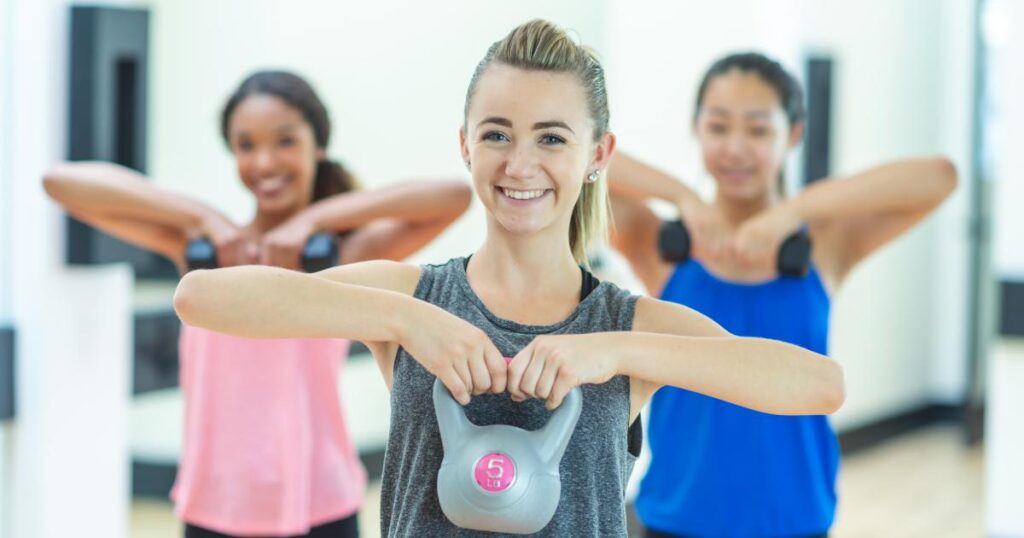
How to create a Teenage fitness plan
Creating a balanced fitness plan for teenagers requires a holistic approach that considers various aspects of physical health and well-being.
- Start by understanding the teenager’s goals, preferences, and interests. Are they looking to improve strength, endurance, flexibility, or overall health? Tailor the fitness plan to align with their objectives and incorporate activities they enjoy, whether it’s team sports, dance classes, outdoor adventures, or solo workouts.
- Incorporate a mix of cardiovascular exercise, strength training, flexibility, and mobility work to ensure comprehensive fitness development. Cardiovascular exercises like running, cycling, swimming, or dancing improve heart health and endurance, while strength training exercises using bodyweight, resistance bands, or free weights build muscle strength and bone density.
- Include flexibility and mobility exercises such as yoga, Pilates, stretching routines, and dynamic warm-up exercises to improve range of motion and prevent injuries. Emphasize the importance of rest and recovery by encouraging teenagers to prioritize sleep, listen to their bodies, and incorporate rest days into their routine for muscle repair and replenishment.
- Provide guidance on proper nutrition to support their fitness goals and overall health. Encourage a balanced diet rich in fruits, vegetables, lean proteins, whole grains, and healthy fats to fuel their bodies for exercise and promote recovery.
- Finally, ensure safety and injury prevention by teaching proper form and technique during exercise and monitoring progress to make adjustments as needed.
By taking a comprehensive approach and considering the teenager’s individual needs, preferences, and goals, you can create a balanced fitness plan that promotes lifelong health and well-being.
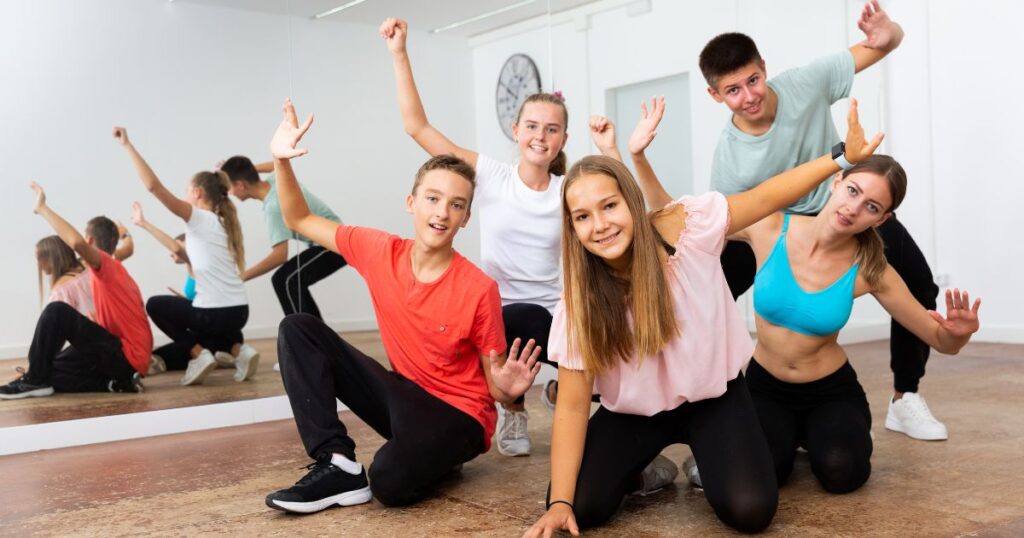
Beginner Workouts for Teens
If you’re new to physical activity, starting with beginner workouts can be a great way to ease into exercise and build a foundation of strength and well-being. Here are some beginner-friendly exercises to get you started:
- Cardio Kickstart: Kick off your fitness journey with beginner-friendly cardio exercises to get your heart pumping and your body moving. Start with simple activities like jumping jacks, skipping, or spot running, aiming for 10–15 minutes of continuous movement. These exercises are excellent for increasing heart rate, improving endurance, and laying the foundation for more intense workouts.
- Bodyweight Basics: Bodyweight exercises are perfect for beginners as they require no equipment and can be easily modified to match your fitness level. Incorporate moves like squats, lunges, push-ups, and tricep dips into your routine. Begin with 2-3 sets of 10–12 repetitions each, focusing on proper form and technique. These exercises help build muscle strength, improve balance, and enhance overall fitness.
- Yoga for Flexibility and Relaxation: Explore the benefits of yoga to improve flexibility, reduce stress, and enhance mindfulness. Start with simple yoga poses such as downward dog, child’s pose, and cat-cow stretch. Practice deep breathing and focus on relaxation as you move through each pose. Aim for 10–15 minutes of gentle yoga practice each day to reap the physical and mental benefits.
- Introduction to Strength Training: Dip your toes into strength training with light weights or resistance bands. Begin with exercises like bicep curls, shoulder presses, and leg lifts, performing 2-3 sets of 10–12 repetitions each. Focus on proper form and gradually increase the resistance as you gain strength. Strength training helps build muscle, boost metabolism, and improve overall body composition.
- Fun with Fitness Challenges: Make workouts enjoyable by incorporating fitness challenges into your routine. Set achievable goals, such as completing a certain number of squats or holding a plank for a set amount of time. Challenge yourself to beat your own records and celebrate your progress along the way. Fitness challenges not only keep you motivated but also help track your improvement over time.
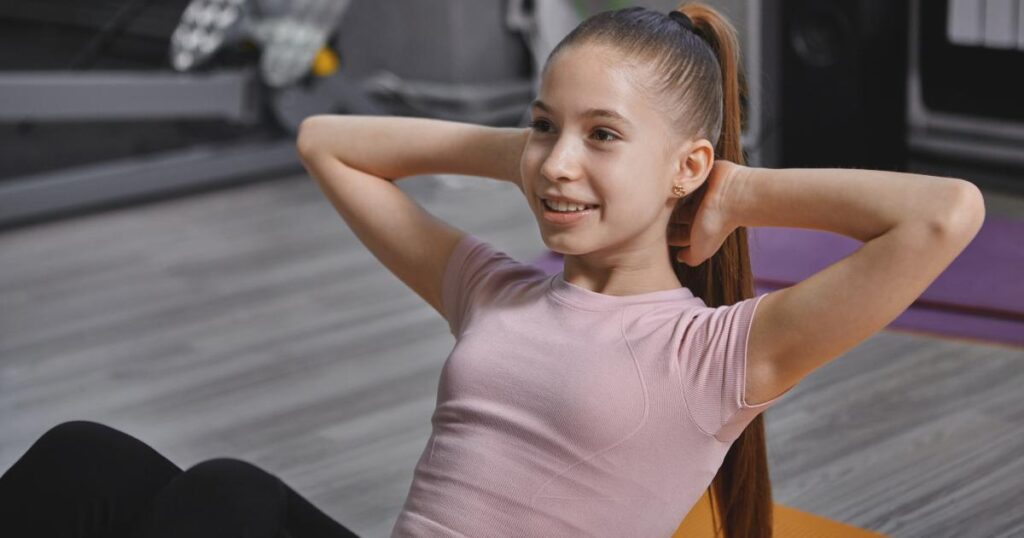
Additional Tips for working out:
- Gradual Progression: Start with light weights or no weights, focusing on proper form and technique, and gradually increase intensity as fitness levels improve.
- Customize Reps: Tailor exercises to individual goals by adjusting reps accordingly. Begin with a manageable number and increase gradually as strength and endurance develop.
- Cardio Activities: Incorporate cardio exercises like running, cycling, swimming, or sports to boost endurance and cardiovascular health.
- Warm-Up and Cool-Down: Prioritize warming up before and cooling down after workouts to prevent injury. Stretching is also vital to maintain flexibility and prevent muscle tightness.
Crafting a teenage fitness plan that incorporates these exercises and tips ensures a well-rounded approach to physical wellness, setting the stage for a lifetime of health and vitality.
Advanced Workouts for Teens
Take your fitness journey to new heights with these advanced-level workouts tailored specifically for teenagers. From challenging cardiovascular routines to sport-specific training drills, these exercises are designed to push your limits, enhance your performance, and unlock your full athletic potential.
- Advanced Cardiovascular Challenges: Elevate your cardio workouts by incorporating high-intensity interval training (HIIT) routines. Integrate exercises like burpees, jump squats, sprints, and plyometric jumps into your sessions. Aim for longer intervals of intense effort followed by shorter rest periods to push your cardiovascular limits and enhance endurance.
- Explosive Plyometrics: Introduce explosive plyometric exercises to your routine to improve power, agility, and athleticism. Exercises such as box jumps, depth jumps, and bounding drills challenge your muscles to generate maximum force in minimal time, leading to enhanced performance in sports and other physical activities.
- Complex Strength Training: Progress to more complex strength training exercises that target multiple muscle groups simultaneously. Incorporate compound movements like clean and jerks, snatches, and pistol squats to challenge your coordination, balance, and overall strength. Utilize heavier weights and lower rep ranges to stimulate muscle growth and increase strength.
- Advanced Yoga and Mobility Work: Deepen your yoga practice by exploring advanced poses and flows that require greater flexibility, strength, and balance. Experiment with arm balances, inversions, and deep backbends to challenge your body and expand your practice. Incorporate mobility drills and dynamic stretches to improve joint range of motion and prevent injuries.
- Sport-Specific Training: Tailor your workouts to the demands of your chosen sport by incorporating sport-specific drills and exercises. Focus on improving agility, speed, and strength in areas relevant to your sport, whether it’s soccer, basketball, tennis, or track and field. Work with a coach or trainer to develop a customized training program that addresses your specific needs and goals.
- Advanced Functional Fitness: Take your functional fitness training to the next level by incorporating advanced movements and equipment such as kettlebells, battle ropes, and suspension trainers. Perform exercises like Turkish get-ups, single-leg deadlifts, and muscle-ups to challenge your stability, coordination, and total-body strength.
- Endurance Challenges: Push your limits with endurance challenges such as long-distance runs, bike rides, or swimming sessions. Set ambitious goals like completing a marathon, participating in an obstacle course race, or tackling a multi-day hiking expedition. Train consistently and progressively increase the duration and intensity of your endurance workouts to build mental toughness and resilience.
As you embark on advanced-level workouts, it’s essential to prioritize proper technique, recovery, and injury prevention. Listen to your body, adjust your training as needed, and seek guidance from qualified fitness professionals to ensure safe and effective progress. Remember that consistency, dedication, and perseverance are key to achieving your fitness goals and unlocking your full potential as a teenage athlete.
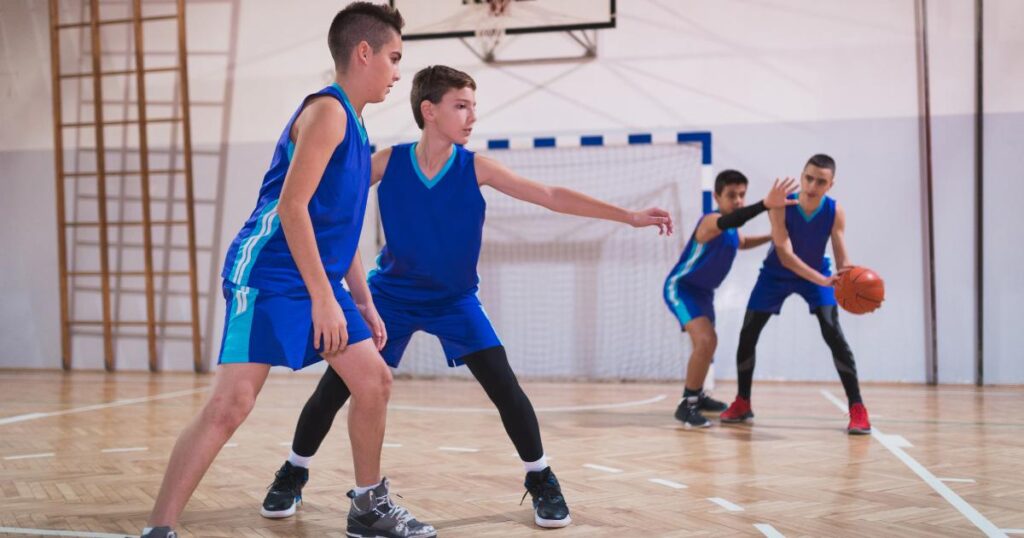
Tips for Avoiding Injuries
If you want to stay safe when you work out as a teenager, avoid getting injured by following these tips:
- Do warm-up exercises before your workout to prepare your muscles and reduce the chance of getting hurt.
- After your workout, do low-key stretches to cool down and help your muscles recover.
- Make sure you’re using the right form when you work out so you don’t accidentally hurt yourself.
- Start with lighter weights or easier exercises, then gradually increase the difficulty level to avoid hurting yourself.
- Pay attention to how your body is feeling during your workout. If something hurts or feels wrong, take a break or ask for help.
- Make sure you’re eating well and drinking enough water so your body can perform at its best and recover from exercise.
By doing all of these things, you can avoid hurting yourself while still staying fit as a teenager.
Incorporate Warm-Up and Cool-Down Routines
To build a successful teenage fitness plan, warm-up and cool-down routines are critical. These routines help prevent injuries and prepare your body for physical activity.
Dynamic stretches raise the core body temperature, promote blood flow, and make muscles more flexible. Static stretches and gentle movements help gradually lower the heart rate, enhance muscle recovery, and reduce post-workout soreness.
Including these routines in your wellness plan will support injury prevention and improve overall performance.
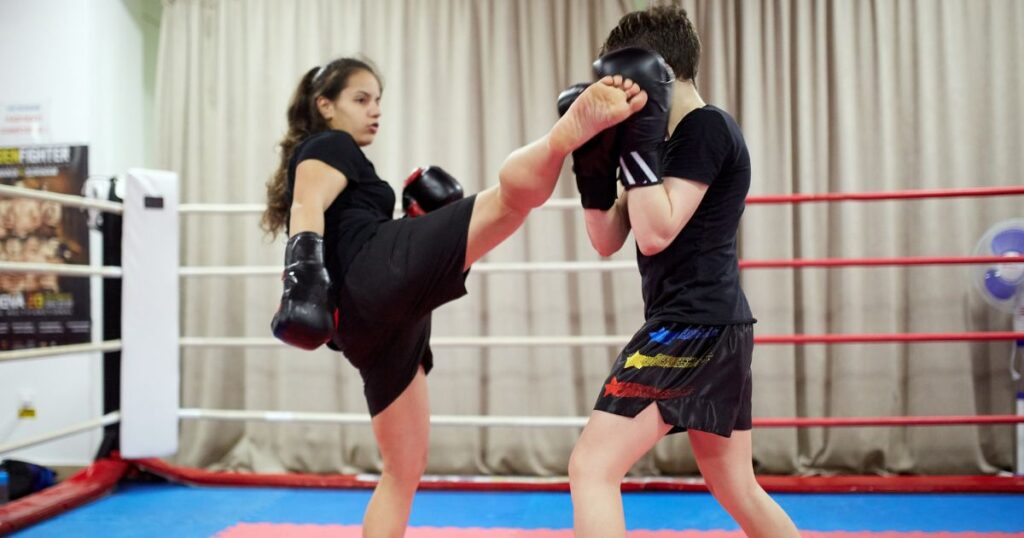
Nutrition and Hydration
In developing an effective teenage fitness plan, it’s crucial to emphasize not only exercise but also proper nutrition and hydration. Eating the right foods provides the energy and nutrients necessary for physical activity, muscle growth, and overall health. A balanced diet incorporating fruits, vegetables, lean proteins, and healthy fats is essential for optimal performance and well-being. Likewise, hydration plays a vital role in controlling body temperature, lubricating joints, and transporting nutrients throughout the body.
Eat Healthy for Optimal Performance
Healthy eating habits are paramount for excelling in sports and exercise. Consuming a variety of nutrient-dense foods, including fruits, vegetables, lean proteins, and whole grains, ensures that teenagers receive essential nutrients to support their fitness goals.
Consulting with a healthcare professional can help determine the appropriate calorie range to fuel their activity levels and aspirations. Regular, balanced meals throughout the day sustain energy levels, enhance performance, and prevent overeating or undereating.
Additionally, incorporating metabolism-boosting foods such as lean proteins, whole grains, and fiber-rich foods aids in weight management and promotes overall health, facilitating better performance and quicker recovery.
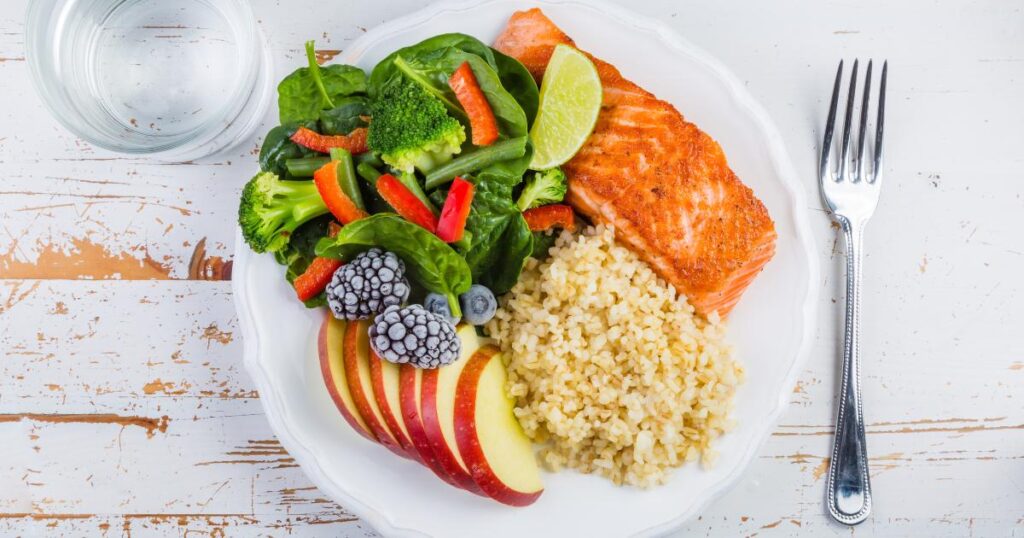
Stay Hydrated During Workouts
Maintaining proper hydration is essential for both fitness and health, particularly during teenage fitness activities. Here are some key tips to stay hydrated:
- Drink water consistently throughout the day, aiming for 8–10 cups to ensure adequate hydration.
- During workouts, sip water frequently to replace fluids lost through sweat and prevent dehydration.
- Consume electrolyte-rich foods like bananas, coconut water, or sports drinks to replenish electrolytes lost during exercise, which help regulate fluid balance and muscle function.
- Listen to your body’s thirst cues and drink water regularly, especially during intense physical activity or in warm weather conditions.
- Begin your workout adequately hydrated, continue to drink water or sports drinks during exercise, and replenish fluids afterward to support optimal performance and recovery.
- Limit consumption of caffeinated beverages, energy drinks, and sugary sodas, as they can contribute to dehydration and provide empty calories that do not support overall fitness goals.
By prioritizing proper nutrition and hydration, teenagers can enhance their fitness journey, optimize performance, and promote long-term health and well-being.

Maintaining Motivation in Fitness Journey
Staying motivated throughout your fitness journey is essential for long-term success. Here are some strategies to help keep you on track:
- Set realistic goals: Establish achievable fitness goals that are specific, measurable, and relevant to your interests and aspirations. Break them down into smaller milestones to track your progress and celebrate your achievements along the way.
- Find Your Why: Identify your reasons for wanting to improve your fitness. Whether it’s to feel more confident, excel in sports, or improve overall health, connecting with your underlying motivations can help fuel your determination during challenging times.
- Mix It Up: Keep your workouts fresh and exciting by trying new activities, varying your routine, and setting new challenges. Experiment with different types of exercises, classes, or sports to keep things interesting and prevent boredom.
- Reward Yourself: Celebrate milestones achieved by rewarding yourself with something you enjoy, such as a new workout outfit, a healthy treat, or a fun activity with friends. Recognizing your progress and hard work can boost morale and motivate you to continue pushing towards your goals.
- Stay Accountable: Share your fitness goals with friends, family, or a workout buddy who can provide support, encouragement, and accountability. Consider joining a fitness community or online group to connect with like-minded individuals and share experiences.
- Track Your Progress: Keep a record of your workouts, achievements, and improvements to visually see how far you’ve come. Use fitness apps, journals, or calendars to monitor your progress and stay motivated to reach your goals.
- Focus on the Journey: Embrace the process of self-improvement and celebrate every step of your fitness journey, regardless of setbacks or challenges. Recognize the effort you put in each day and the positive changes you experience along the way.
By implementing these strategies, you can maintain motivation, overcome obstacles, and continue making progress towards your fitness goals as a teenager. Remember that consistency, patience, and perseverance are key to achieving long-term success in your fitness journey.
Overcoming Common Fitness Obstacles
If you’re striving to improve your fitness as a teenager, you might encounter challenges that hinder your progress. However, there are effective strategies to overcome these obstacles and stay on track with your goals. Here’s how:
- Identify Potential Problems and Plan Solutions: Take the time to assess any potential obstacles that may arise in your fitness journey, such as time constraints, lack of motivation, or boredom with your routine. Once identified, brainstorm practical solutions to address these challenges proactively.
- Stay Consistent and Adapt: Even when faced with difficulties, commit to sticking with your fitness routine. Consistency is key to seeing results over time. Additionally, consider incorporating variety into your workouts to keep them engaging and exciting. Trying new activities or adjusting your routine can help prevent monotony and maintain motivation.
- Seek Support and Accountability: Don’t hesitate to reach out for support when needed. Joining fitness communities, seeking guidance from personal trainers, or enlisting the help of workout buddies can provide valuable encouragement, accountability, and motivation. Surrounding yourself with like-minded individuals who share similar goals can make the journey more enjoyable and rewarding.
- Focus on Personal Growth and Set Realistic Goals: Instead of comparing yourself to others, focus on your own progress and achievements. Set realistic and achievable goals that align with your abilities and aspirations. Celebrate each milestone along the way, no matter how small, and recognize the progress you’ve made towards becoming a fitter and healthier version of yourself.
By implementing these strategies and maintaining a positive mindset, you can overcome common fitness obstacles and successfully reach your goals as a teenager. Remember that progress takes time and perseverance, so stay committed to your journey and celebrate every step forward.
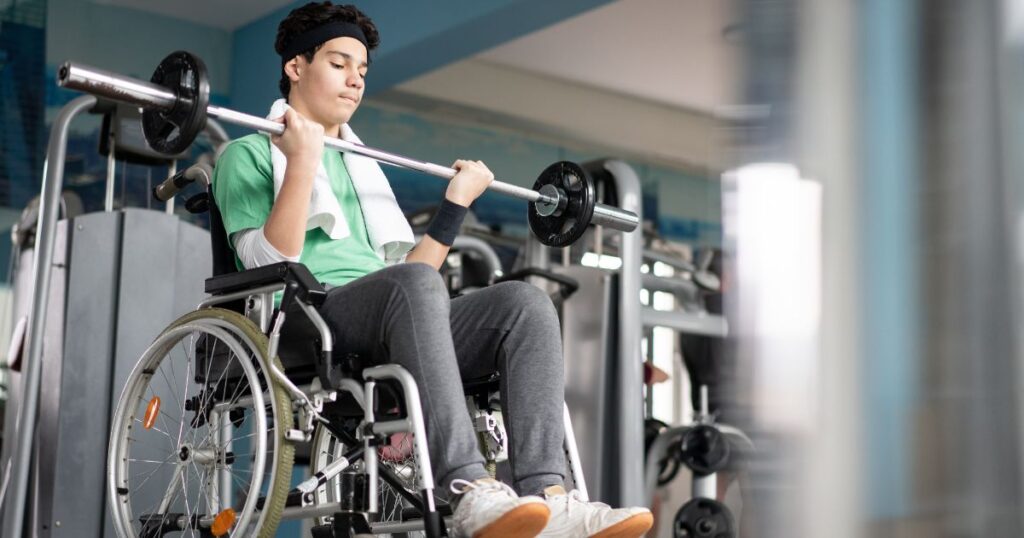
Dealing with Plateaus in Fitness Progress
Experiencing a plateau in your fitness journey is a normal part of the process, but it doesn’t have to derail your progress. Here’s how to overcome it:
- Change Up Your Exercises: Introduce new exercises or variations into your workout routine to challenge your body in different ways. Incorporating different movements or trying alternative equipment can help break through stagnation and stimulate muscle growth.
- Adjust Your Diet: Evaluate your dietary habits and make any necessary adjustments to support your fitness goals. Focus on consuming nutrient-dense foods that provide the fuel your body needs for energy and recovery. Consider consulting with a nutritionist or dietitian for personalized guidance on optimizing your nutrition for improved fitness performance.
- Set New Goals: Reassess your goals and set new targets to strive for. Whether it’s increasing the weight you lift, improving your endurance, or mastering a new skill, setting specific and achievable goals can reignite your motivation and drive progress forward.
- Track and Monitor Progress: Keep track of your workouts, nutrition, and progress over time. Monitoring your results can help identify areas for improvement and track your journey towards your goals. Use fitness apps, journals, or progress photos to visually document your progress and stay accountable.
- Seek Professional Guidance: If you’re struggling to overcome a plateau, consider seeking guidance from a fitness coach or personal trainer. They can provide expert advice, tailor a customized workout plan to suit your needs, and offer valuable insights to help you break through barriers and reach new heights in your fitness journey.
Remember, experiencing plateaus is a natural part of the fitness process, but it’s how you respond to them that matters most. By making changes to your routine, staying consistent, setting new goals, and seeking support when needed, you can overcome plateaus and continue making progress towards your fitness goals. Stay patient, stay focused, and trust in the process of your journey.
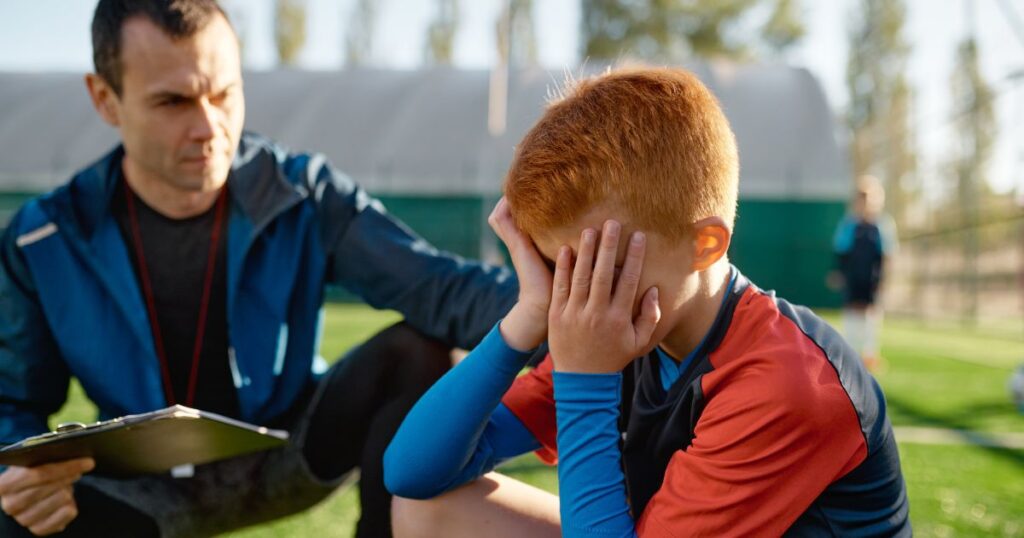
Frequently Asked Questions
How much physical activity should a teenager engage in each day?
According to the physical activity guidelines from the Centers for Disease Control and Prevention (CDC), teenagers should engage in at least 60 minutes of physical activity every day. This activity should be of moderate intensity, such as brisk walking, swimming, or cycling. Additionally, teenagers should incorporate muscle-strengthening activities, such as resistance training or bodyweight exercises, at least three days per week.
What types of exercises or activities are best for teenagers?
To build a good teenage fitness plan, combine cardio, strength training, and flexibility exercises. Cardio exercises like running or dancing improve heart health and burn calories. Strength training using bodyweight or weightlifting helps with muscle growth, bone health, and healthy growth. Flexibility exercises like yoga improve range of motion and prevent injury. Choose activities that match your interests and goals so that you stay motivated. Start with proper form, gradually increase intensity, and consult a professional for safe and effective workouts.
Are there any specific considerations or precautions teenagers should take when starting a teenage fitness plan?
Building a teenage fitness plan can be beneficial, but it’s important to take certain precautions. Listen to your body and increase intensity gradually. Stay hydrated and eat nutritious foods to support growth and development. If you have any underlying health issues or injuries, consult a healthcare professional before starting a new routine. Also, consider any dietary restrictions when building your teenage fitness plan.
Can taking rest days improve your fitness progress?
To improve fitness progress, resting is essential. Resting days give muscles a break to recover and repair for better performance. Overtraining should be avoided because it can cause injuries and burnout. To ensure long-term success, incorporating rest days into your routine is crucial. The number of rest days needed depends on individual fitness levels and goals.
Final Words
Building a teenage fitness plan is important for physical and mental well-being. It is as important a giving your kids important life skills.
Exercise helps maintain weight, build strength, reduce stress, and improve mood. Choose the right plan based on your fitness level and interests. Safety comes first with warm-up, cool-down, and injury prevention techniques. Balance strength training, cardio, and mobility exercises for a well-rounded routine.
Set realistic goals and celebrate milestones to stay motivated. Good nutrition and hydration support optimal performance. Overcome plateaus and take rest days for long-term progress.
Start your fitness journey today and inspire others on social media!
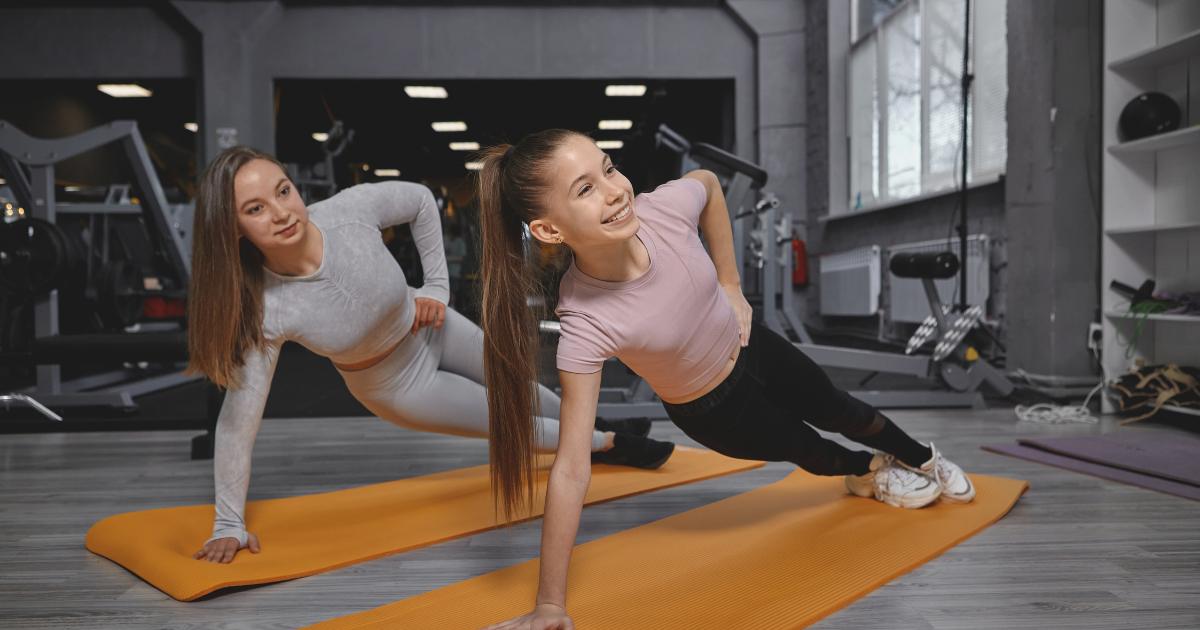




Leave a Reply